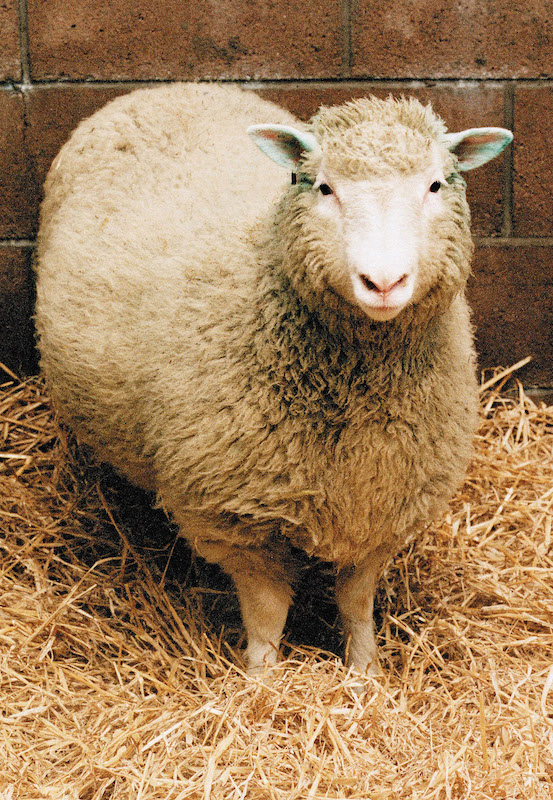
When Dolly the sheep was born, 20 years ago this Tuesday, few took note of the remarkable lamb. To know what was special about her, you’d have to look at her DNA: she had been cloned from a cell from an adult sheep by Scottish researchers who had worked on the project for a decade.
Dolly wasn’t the first animal to be cloned—research on cloning had been going on since the mid-20th century—but she was the first example of successful cloning of a mammal from an adult cell, rather than a more malleable embryo. Getting there wasn’t easy, nor was it easy for laypeople to understand how the Scottish team succeeded. But, early the year after her birthday, when a headline-grabbing paper in the journal Nature let the world know (and confirmed to insiders) what had happened, TIME published a special report on cloning and took a crack at an explanation.
Here’s how the magazine explained the way it worked:
To create Dolly, the [Roslin Institute] team concentrated on arresting the cell cycle—the series of choreographed steps all cells go through in the process of dividing. In Dolly‘s case, the cells the scientists wanted to clone came from the udder of a pregnant sheep. To stop them from dividing, researchers starved the cells of nutrients for a week. In response, the cells fell into a slumbering state that resembled deep hibernation.
At this point, [embryologist Ian] Wilmut and his colleagues switched to a mainstream cloning technique known as nuclear transfer. First they removed the nucleus of an unfertilized egg, or oocyte, while leaving the surrounding cytoplasm intact. Then they placed the egg next to the nucleus of a quiescent donor cell and applied gentle pulses of electricity. These pulses prompted the egg to accept the new nucleus—and all the DNA it contained—as though it were its own. They also triggered a burst of biochemical activity, jump-starting the process of cell division. A week later, the embryo that had already started growing into Dolly was implanted in the uterus of a surrogate ewe.
An inkling that this approach might work, says Wilmut, came from the success his team experienced in producing live lambs from embryonic clones. “Could we do it again with an adult cell?” wondered Wilmut, a reserved, self-deprecating man who likes gardening, hiking in the highlands and drinking good single-malt Scotch (but who was practical enough to file for a patent before he went public).
It was a high-risk project, and in the beginning Wilmut proceeded with great secrecy, limiting his core team to four scientists. His caution proved to be justified; the scientists failed far more often than they succeeded. Out of 277 tries, the researchers eventually produced only 29 embryos that survived longer than six days. Of these, all died before birth except Dolly, whose historic entry into the world was witnessed by a handful of researchers and a veterinarian.
Get your history fix in one place: sign up for the weekly TIME History newsletter
Dolly the sheep was euthanized in 2003, after developing lung disease—and raising questions about whether being cloned from a 6-year-old ewe made her age more quickly. (Most sheep live about twice as long as she did.)
Meanwhile, the fears about human cloning that were raised by her birthday did not end up panning out, at least not so far, and perhaps for a simple reason: In a TIME poll, only 7% of readers said they would be interested in cloning themselves if they had the chance.
Read the full report, here in the TIME Vault: Will There Ever Be Another You?
More Must-Reads from TIME
- Cybersecurity Experts Are Sounding the Alarm on DOGE
- Meet the 2025 Women of the Year
- The Harsh Truth About Disability Inclusion
- Why Do More Young Adults Have Cancer?
- Colman Domingo Leads With Radical Love
- How to Get Better at Doing Things Alone
- Michelle Zauner Stares Down the Darkness
Write to Lily Rothman at lily.rothman@time.com